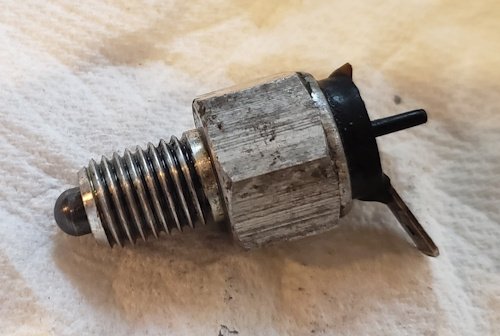spokanetom
New member
I'm restoring a 1976 R75/6 and today I accidentally broke the neutral switch when cleaning the transmission. So I need to replace it. When I looked on the Max BMW parts website to see what part to get I see three different switches:
61 31 1 243 097 - SWITCH (from 09/75) $82.81
6131097 - NEUTRAL LIGHT SWITCH $29.99 (this one is brass-colored)
61 31 1 243 097N - NEUTRAL SWITCH NORIS 5 SPEED (Alternate part to #61311243097) $20.99
Mine is a 5 speed, but I don't know what a "norris" five speed is. All three of these look identical to mine below except of course for the brass-colored one. How do I determine which one I should get?

61 31 1 243 097 - SWITCH (from 09/75) $82.81
6131097 - NEUTRAL LIGHT SWITCH $29.99 (this one is brass-colored)
61 31 1 243 097N - NEUTRAL SWITCH NORIS 5 SPEED (Alternate part to #61311243097) $20.99
Mine is a 5 speed, but I don't know what a "norris" five speed is. All three of these look identical to mine below except of course for the brass-colored one. How do I determine which one I should get?



